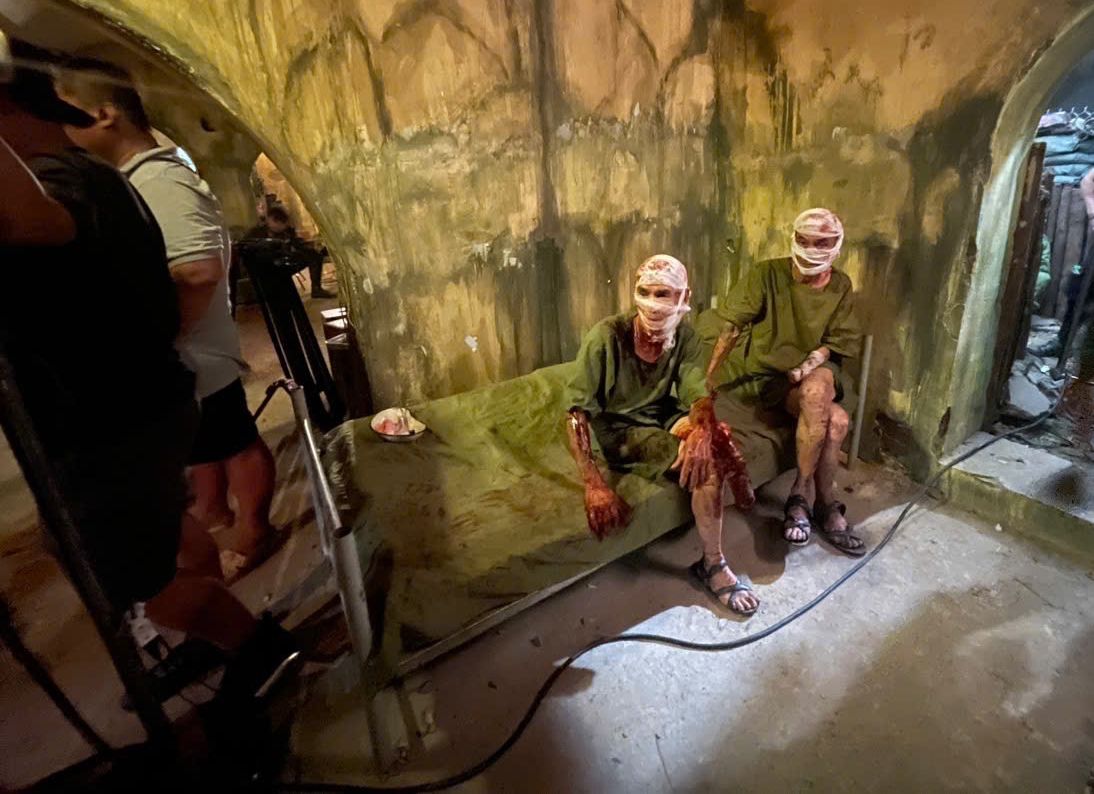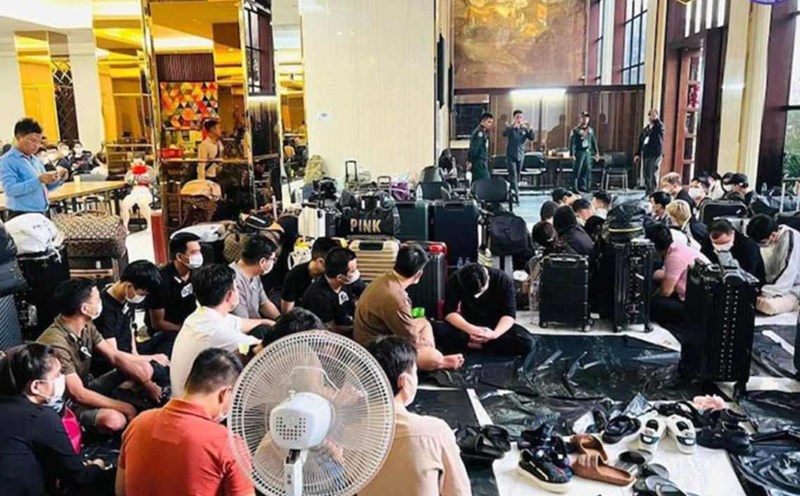In the scene of a cramped surgical tunnel, injuring a soldier "lined up like a fish", a soldier with both feet in a c belonging restlessly on a hospital bed.
At first, the audience thought it was a costume product or a filming device. But the truth is more heartbreaking and realistic: he was a war invalid who fought directly and left part of his body on the battlefield of Quang Tri.
Not only one, but many disabled veterans were present at the set of "Red Rain", continuing to "enlist" in another war - fighting for memories to not fade away.
They came to the film crew with an optimistic spirit, some people joked: "Will you have a wheelie, a wheelie or blind eyesight? Official disability 1⁄4 or 3⁄4?" The gentle words that made the whole crew choked up, because behind that humor was the pain of war engraved on the skin. In harsh filming conditions, the cold of the Central region cut their skin and meat, the men still wore thin military uniforms, patiently lying still for hours to film. The old wounds are certainly painful, but they do not complain.


For the disabled, they do not need to "act". Every eye, every movement, every scar is a vivid testament to the past. They returned to the ancient Citadel not only to support the film crew, but also to once again be close to their teammates, to continue the unfinished story of the generation that has fallen in the Thach Han River. Director Dang Thai Huyen choked up: "The guys arrived at the studio very early, some were traveling by homemade three-wheeled vehicle. Seeing you lying there in the cold, we were even more moved by the spirit of Uncle Ho's soldiers".
It is the presence of war invalids that makes the film "Red Rain" surpass the framework of a cinematic work. It becomes a bridge between the present and the past, between the deep wounds and the gratitude of today's generation. They people who have lost a part of their bodies now continue to contribute their indomitable memories and spirit to cinema and the country.
And thanks to that, "Red Rain" not only depicts war with images, but also with the breath of living historical witnesses, so that each audience member when leaving the theater can carry a burning incense Supper to commemorate the fallen heroes.











